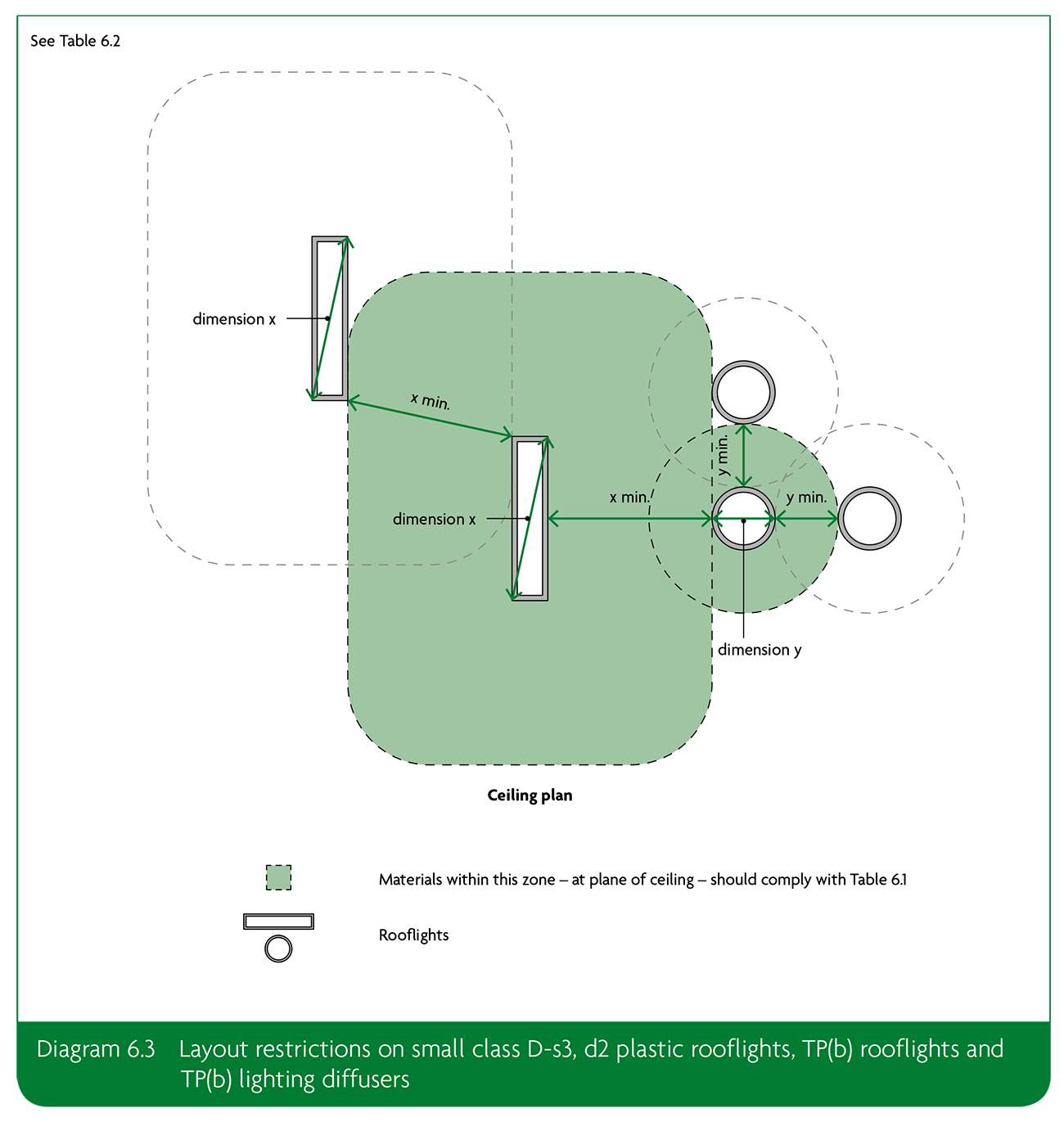TP(a) and TP(b) are terms used in the UK Building Regulations (UK Building Regulations, Fire Safety, Approved Document B, Volume 2 – Buildings other than dwellings) that classify lighting diffusers according to their flammability. TP means thermoplastic, and TP materials, such as polycarbonate (PC), acrylic (PMMA) and polystyrene (PS), are commonly used as diffusers in light fittings. In the UK Building Regulations these are classified as TP(a) or TP(b) and when a lighting diffuser is deemed to be part of a ceiling it must be made of either TP(a) or TP(b) rated material. No other thermoplastic material may be used.
Polycarbonate diffusers over 3mm thick are automatically classified as TP(a), along with any other thermoplastic material that self-extinguishes within 5 seconds when a flame has been removed. TP(b) diffusers may burn, but not at a speed of more than 50mm per minute.
You can download a complete copy of Approved Document B2 fire safety volume 2. (Note that it is described as “for use in England”, but the technical guidance it contains is for the whole of the UK.)
However, it is nearly 200 pages long, so here’s a quick summary of TP(a) and TP(b) and how these terms relate to lighting in buildings other than dwellings.
A lighting diffuser is only judged to be part of the ceiling if it is recessed into it. The diagram here is taken from the UK building regulations and makes it very clear – if a light fitting is surface mounted or suspended then it is not part of the ceiling, so the consideration of TP(a) or TP(b) simply does not apply.

In surface mounted and suspended light fittings, which are by definition not part of the ceiling, the type of material that may be used for the diffuser is regulated by the appropriate product standard, in this case BS EN60598. Note that this is a product standard, not a building standard, and 60598 makes no mention of TP(a) or TP(b) at all.
When a lighting diffuser, such as in a 600 x 600 LED recessed panel, is part of a ceiling it is mandatory that it must be made of TP(a) or TP(b) rated materials.
The difference between TP(a) and TP(b) rated materials is in their composition and thickness or how they react under test conditions when a flame is applied to them.
To be classed as TP(a) a lighting diffuser material must be either:
To be classed as TP(b) a lighting diffuser material must be either:
Yes, almost.
Diffusers made of TP(a) rated material can be used to an unlimited extent in the ceilings of rooms (offices, classrooms etc) and circulation areas (corridors, lift lobbies etc). The UK Building Regulations do not require minimum spacings between TP(a) rated diffusers nor do they limit the % of the ceiling area that can be made of TP(a) rated diffusers.
The advantage therefore in using light fittings with TP(a) rated diffusers is that no checks or calculations are required to ensure that their usage is within the stipulations of the building regulations.
The exception is in respect to “protected stairways”.
A Protected Stairway is, in the words of Approved Document B, “A stair that leads to a final exit to a place of safety and that is adequately enclosed with fire resisting construction. Included in the definition is any exit passageway between the foot of the stair and the final exit.”
In a Protected Stairway no thermoplastic materials at all (neither TP(a) nor TP(b) rated) can be used as part of the ceiling.
Limited restrictions apply to the use of TP(b) rated diffusers in both rooms and circulation areas, and, as with TP(a) rated diffusers, TP(b) rated diffusers cannot be used at all as part of the ceiling in a protected stairway.


Finally, TP(b) rated diffusers may not be used at all as part of the ceiling in a Protected Stairway.
On the great majority of lighting projects recessed fittings with TP(b) rated diffusers are a legitimate and responsible choice.
Fittings with TP(a) rated diffusers can be used in a few additional circumstances, but in the great majority of situations their use is not required and the additional expenditure and potential loss of efficiency has no cost justification.
Some lighting manufacturers, including NVC , offer a range of LED panels with a choice of TP(a) and TP(b) ratings. By using such manufacturers and following their advice in product selection contractors can be confident they are using the most cost-effective solution while maintaining strict compliance with the UK building regulations.
TP(a)/TP(b) relates to the rating of the material from which a lighting diffuser, when it is part of the ceiling, must be made. It is important in “buildings other than dwellings” and its purpose is to restrict the spread of fire horizontally across a ceiling.
“Fire Rated” is completely different. This refers to light fittings that are recessed into a ceiling that is itself a barrier to the spread of fire vertically from one floor in a building to the one above and which may also endanger fire and rescue personnel if it collapses quickly in the event of a fire.
A fire-rated downlight could, in theory, include TP(b) rated materials, and an LED panel with a TP(a) rated diffuser will almost certainly not be “Fire Rated”.